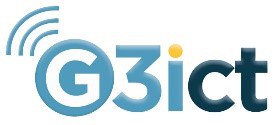IBM Accessibility Launches an Open Source Toolkit
Posted on June 01, 2020

Product Owner, IBM Equal Access Toolkit at IBM Accessibility
Enabling IBM teams with the tools and guidance they need to deliver accessible products has been a long-standing goal of the IBM Accessibility organization, but we have always wanted to do more to support teams outside of IBM. With the CDC reporting that 1 in 4 adults in the U.S have some type of disability, and the recent WebAIM survey finding that 98% of home pages still had detectable accessibility issues, the need for clear guidance and helpful tools is apparent. This is why I am excited to announce that we have launched our Equal Access Toolkit and Accessibility Checker tools – FREE – for everyone!
Clear, concise guidance
The IBM Equal Access Toolkit provides clear, concise guidance on what is needed at each stage of development, from initial research through planning, design, development, verification and launch. We recognize that smaller teams, or an individual, may work differently than a large enterprise. We’ve designed the site to allow teams to adopt accessibility at their own pace. The toolkit divides tasks and considerations into three levels of progression:
- Level 1: The most essential tasks to perform, normally with the least investment. Completing these tasks will address many of the top concerns of people with disabilities.
- Level 2: You should complete these tasks in addition to the first level to address the next-most important issues that may keep certain users from fully using your product.
- Level 3: Completes the Web Content Accessibility Guidelines (WCAG 2.1) portion of the IBM accessibility checklist.
The guidance is also arranged in a way that a user who may be new to accessibility, can follow a guided journey to learn what needs to be done when, for each role. A more experienced user, let us say, a Visual Designer, could jump straight to that topic and scan the bullets for each level much like they would a checklist. Each bullet can then be expanded to access examples, links to other resources, and links to standards’ requirements. The more advanced user can use the search function on the site to quickly reference requirements: For example, does the new Reflow SC call for 200% or 400% magnification?? (The correct answer would be 400%).
We are also sharing the Accessibility Verification Test (AVT) or, Verify process that we utilize inside of IBM as part of the toolkit. The Verify process gives testers a faster way to confirm the accessibility of products. Testers run tools to validate that all issues discoverable by automated testing have been resolved. They then complete a manual inspection and keyboard check of the product, before confirming everything is usable with a screen reader. Just like the rest of the guidance in the toolkit, the Manual and Screen reader testing steps provide bulleted lists that serve as a checklist for experienced testers as well as detailed steps for those newer to the accessibility verification process.
Automated testing and reporting
Speaking of testing, we are also announcing the release our new Accessibility Checker. The IBM Equal Access Accessibility Checker allows teams to rapidly complete page-level testing on Chrome and Firefox browsers. It is an open source tool for web developers and auditors that utilizes IBM's accessibility rule engine, which detects accessibility issues for web pages and web applications. The extension integrates into the browsers’ development tools, providing an integrated checking experience that helps users quickly identify the source of accessibility issues and try suggested fixes.
This release is a complete re-write of the tool that we have used for automated testing inside of IBM. The Accessibility Checker boasts an all new UI, a new engine behind the scenes, and a ruleset of over 160 (and growing) rules and help guidance. For teams seeking accessibility testing in their continuous integration environment, we offer Accessibility Checker plug-ins and modules for NodeJS and Karma that utilize the same engine and rulesets to ensure consistent testing across the board.
We are also providing tools that help record and report on the successful compliance of your products and offerings. The Accessibility Checker Report is an interactive report that you can save as an HTML file for future use and share across your team. It includes the report scan date and time, URL, and a summary of test results followed by the issue details organized by checklist checkpoints, by element roles, and by rules. Each instance of an issue also includes a link that opens an overlay containing a more detailed description of the issue.
IBM has a strong history and commitment to open source, and we feel that the Equal Access Toolkit and the Accessibility Checker are great additions to our open catalog. Our mission is to elevate accessibility to a mainstream practice, culture, and mindset that inspires and guides others to design and build delightful and inclusive experiences. We believe the IBM Equal Access Toolkit will be an open platform that will empower product teams to conceive, design, develop, ship, and report on their digital products regardless of their accessibility expertise. But do not just take my word for it – kick the tires! The Equal Access Toolkit and Accessibility Checker are available today – all fully functional – all free – all open. I encourage you to take a look and contribute back to the project; enabling accessibility for everyone.























